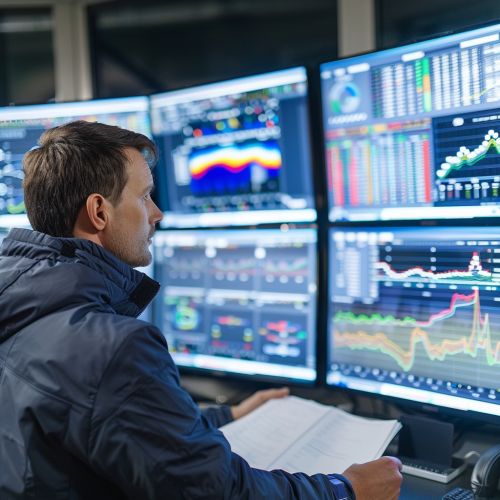Weather prediction: Difference between revisions
No edit summary |
No edit summary |
||
| Line 3: | Line 3: | ||
Weather prediction, also known as [[Meteorology|meteorological forecasting]], is a scientific process that involves the use of empirical and statistical techniques to predict the state of the atmosphere at a given location and time. This field of study is an essential aspect of [[Atmospheric Science|atmospheric sciences]] and plays a critical role in various sectors, including agriculture, aviation, and disaster management. | Weather prediction, also known as [[Meteorology|meteorological forecasting]], is a scientific process that involves the use of empirical and statistical techniques to predict the state of the atmosphere at a given location and time. This field of study is an essential aspect of [[Atmospheric Science|atmospheric sciences]] and plays a critical role in various sectors, including agriculture, aviation, and disaster management. | ||
[[Image:Detail-77751.jpg|thumb|center|A weather forecaster analyzing data on multiple screens.]] | [[Image:Detail-77751.jpg|thumb|center|A weather forecaster analyzing data on multiple screens.|class=only_on_mobile]] | ||
[[Image:Detail-77752.jpg|thumb|center|A weather forecaster analyzing data on multiple screens.|class=only_on_desktop]] | |||
== History of Weather Prediction == | == History of Weather Prediction == | ||
Latest revision as of 15:42, 7 May 2024
Introduction
Weather prediction, also known as meteorological forecasting, is a scientific process that involves the use of empirical and statistical techniques to predict the state of the atmosphere at a given location and time. This field of study is an essential aspect of atmospheric sciences and plays a critical role in various sectors, including agriculture, aviation, and disaster management.


History of Weather Prediction
The history of weather prediction dates back to ancient times when people relied on astronomical and meteorological phenomena to predict weather changes. The earliest known form of weather prediction was astrological, where celestial events were believed to influence weather patterns. However, the scientific approach to weather prediction began in the 19th century with the development of thermometers and barometers.
Meteorological Data Collection
The process of weather prediction begins with the collection of meteorological data. This data is gathered from various sources, including weather stations, weather satellites, and weather balloons. These instruments measure various atmospheric parameters such as temperature, humidity, wind speed and direction, and atmospheric pressure.
Weather Forecasting Models
There are several types of weather forecasting models used in meteorology. These include Numerical Weather Prediction (NWP) models, statistical models, and ensemble forecasting models. NWP models use mathematical equations to simulate the atmosphere's physical processes, while statistical models use historical weather data to predict future weather conditions. Ensemble forecasting involves the use of multiple models or multiple runs of a single model to account for the inherent uncertainty in weather prediction.
Accuracy and Limitations of Weather Prediction
Despite advancements in technology and meteorology, weather prediction is not always accurate. This is due to the chaotic nature of the atmosphere and the limitations of meteorological models and data collection methods. However, the accuracy of weather forecasts generally decreases with the length of the forecast period.
Impact of Weather Prediction
Weather prediction has a significant impact on various sectors. In agriculture, accurate weather forecasts can help farmers plan their activities, thus maximizing crop yield and minimizing losses. In aviation, weather forecasts are crucial for flight planning and safety. Weather prediction also plays a vital role in disaster management, as accurate forecasts can help mitigate the effects of severe weather events.
Future of Weather Prediction
The future of weather prediction lies in the advancement of technology and meteorological models. With the advent of artificial intelligence and machine learning, meteorologists are now able to process vast amounts of data, leading to more accurate and timely forecasts. Furthermore, advancements in satellite technology are expected to improve the quality of meteorological data, thus enhancing the accuracy of weather forecasts.
